How Should Dress Pants Fit — Our Guide To Look Your Best
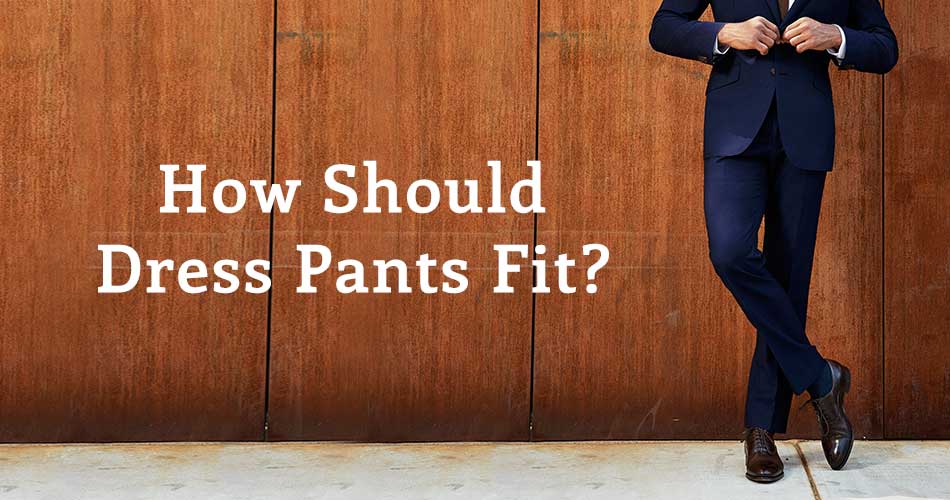
Suit Pant Perfection: Our Guide to How Dress Pants Should Fit
Knowing how dress pants should fit is an essential skill to keep in your back pocket. But even for the well-versed suit-wearers out there, navigating the do’s and don’ts of how dress pants should fit can be a bit confusing. Much like getting the fit of your suit just right, there are quite a few frequent fashion follies that occur – enough so that we’ve written this PSA to help nip this problem in the butt (we enjoy corny jokes, you should too).
It’s true, dress pant fit can go all kinds of wrong, but it can also go all sorts of right. Of course, before we dive into it, we’d be remiss if we didn’t mention the easiest way to ensure your pants fit correctly, and that’s by going made-to-measure. We may be a bit biased, but truly, the one overarching element that separates a killer suit from any run-of-the-mill suit is the fit. So, make sure to keep in mind the following points about how suit pants should fit, especially if you’re buying off-the-rack.
Waist and Rise
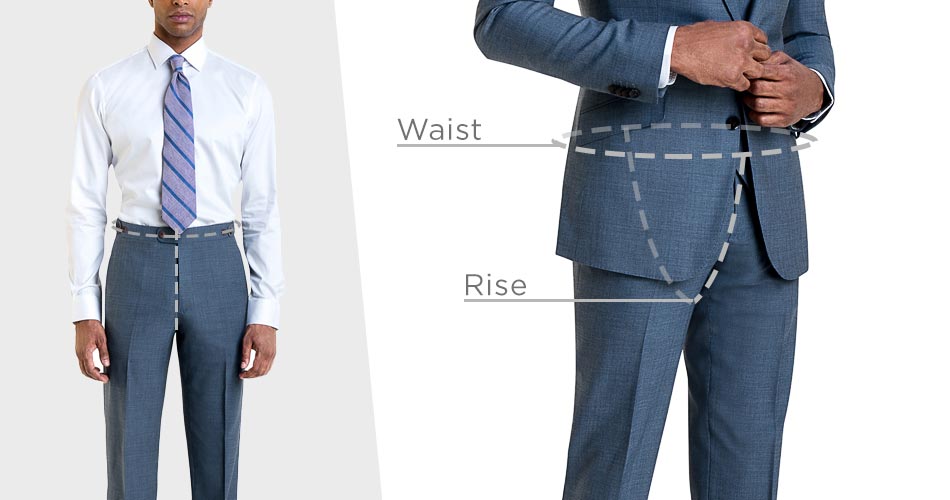
To answer how dress pants should fit around the waist, we first need to define the ‘rise’, which goes hand-in-hand with the waist. The ‘rise’ of your dress pants is the total length of fabric traveling from the front hem to the back hem. Naturally, this means the ‘rise’ will determine where the top hem sits on your body.
The Rise
Despite what the hipster trends have you believing, not all pants were intended to be worn as low on the torso as your low-rise jeans. For dress pants, a classic rise will leave the waistband sitting at the mid-to-high hip level — so just below your belly button. Your waistband should be snug enough that adding a belt or rocking suspenders would be a style choice, not a necessity. If your rise is too short, you may notice a “wedgie” effect. This pulling is coming from the back because the pants waist is sitting too low. If your rise is too long, the inverse would happen, and your crotch would fall too low (more on this area later).
The Waist
With the rise determined, we can then determine how dress pants should fit at the waist. The waist should be snug enough to allow the pants to sit at the appropriate height for your desired rise without the need for a belt to hold up the pants. A belt can still be worn to accessorize with a matching pair of dress shoes but shouldn’t be needed if your waist is sized correctly. If the waist is too tight, not only will this cut off circulation and be uncomfortable but you’ll also end up with the dreaded muffin top silhouette. If its too loose and you use a belt to cinch the pants at the right height, you’ll end up with ugly bunching along the waistline, an unattractive sight and a dead giveaway on a lazy solution to a poor fit.
Crotch
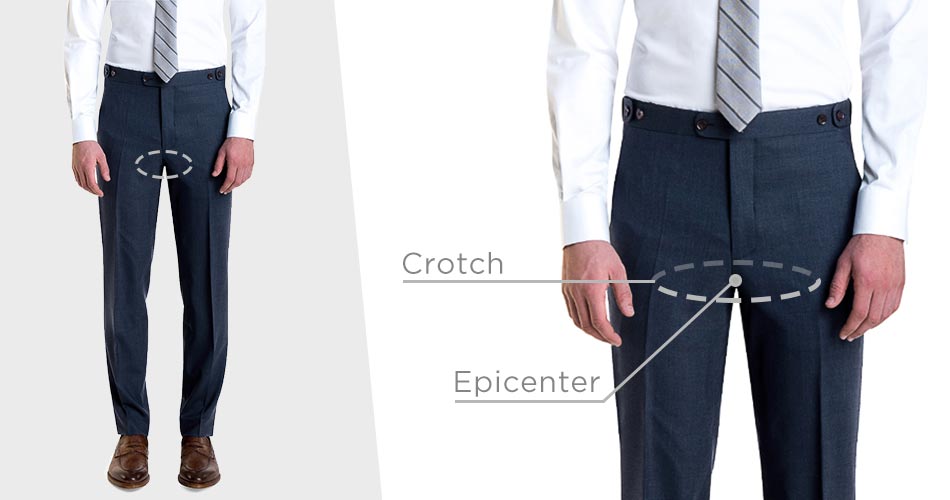
Since we’re all uniquely beautiful humans who come in different shapes and sizes, this area is especially important to be aware of when buying off-the-rack pants that are made to standardized measurements. The skinny leg trend is the catalyst for many a too-tight crotch region, which can end up looking and feeling extremely uncomfortable, especially when your fabric doesn’t stretch. So how should suit pants fit in this case?
Let’s define our terms: the crotch is the region whose epicenter is the intersection between the rise seam and the inner thigh seams. Well-tailored dress pants would see this area of fabric falling streamline against your body without being too roomy or too tight.
Seat
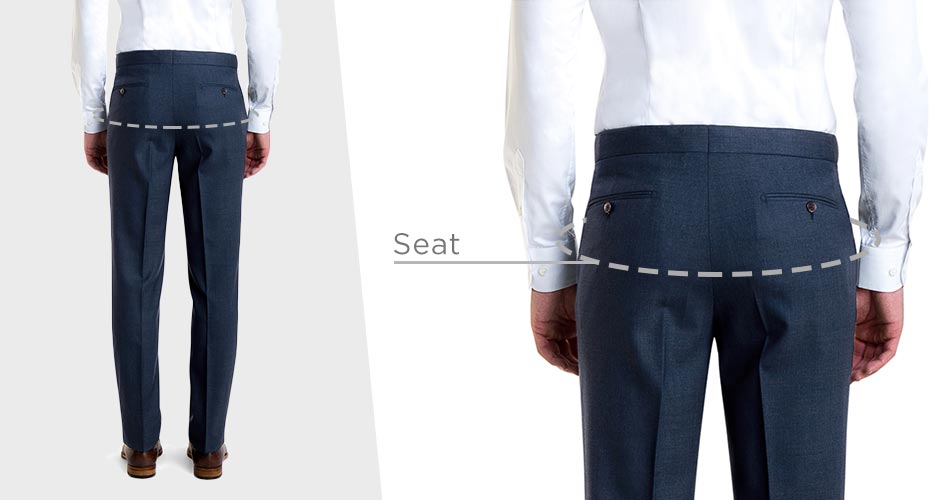
The seat of your pants is essentially the area your butt sits on. While you’d rightfully focus on the back of the hips, the comfort and fit of the seat actually depend on the circumference of the hips. In fact, the first place we look when determining how dress pants should fit during an appointment is the seat and hips, and fitting outward from there.
A saggy or skin-tight seat area can really kill a would-be sharp suit and is an obvious sign of poor fit, so this is a biggy to look out for. This fabric should also fall streamline against your body, and become narrower towards the top near your waist and at the bottom close to your thighs (as your anatomy would insist).
To test your garments at home, you can try putting your hands in your front pockets and pulling the fabric away from your body. Your hands should fit comfortably, but if you’re able to extend the space any more than an inch, the seat is too loose, and your dress pants should fit a bit slimmer.
On the other hand, if it’s a struggle to zip up, the crotch is too tight. Exaggerate your stride when you’re walking and see if you can feel material pulling— if there is, the seat is too tight.
Leg Width
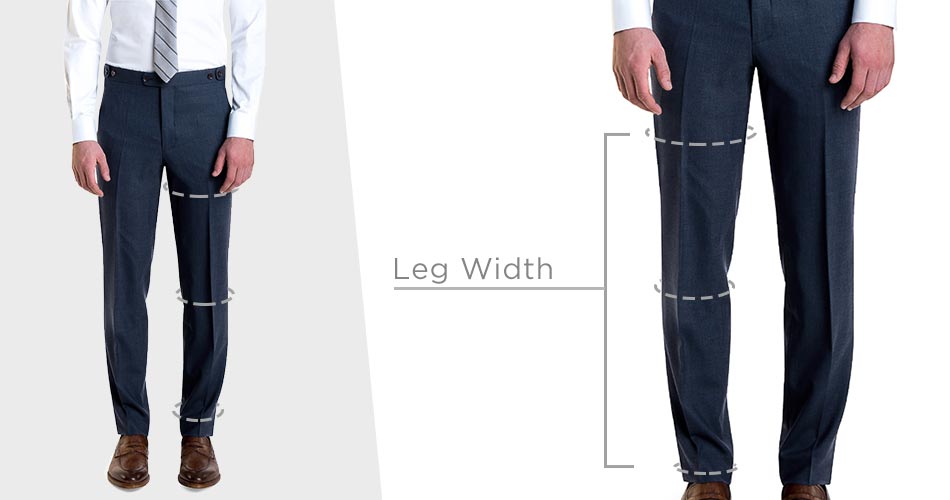
Leg width comes down mostly to your personal style, and the trends on the table today range from super-skinny to oversized. We recommend you ignore the trends and stick to a classic look in this area when considering how your dress pants should fit.
The classic fit, and conveniently, a work-friendly option is that you should be able to pinch about one to two inches of fabric on either side of your legs. This way, the fabric will fall close to your silhouette and drape cleanly without clinging to it. A bit of an inward taper from the thigh to hem will fall along with the natural narrowing of the leg, and it will look smart and natural on all body types.
Length

For dress pant length, let’s first look at the seams. The inseam, shown spanning from the start of the crotch down to the bottom of the leg is what you will typically see in a retail context. The outseam, spanning from the top of the waist down to the leg is the more official measurement that determines leg length.
More importantly, we’ll look at the ‘break’ (the way the bottom of the hemline meets your dress shoes) can affect how dress pants should fit. The break you choose will typically affect the width of the hem, as some break options require a tapered (or widened) opening.
In the end, it all depends on the vibe you’re going for with your suit, and where you’ll be wearing it. This topic can be confusing to navigate, so if you want to take a deeper dive into understanding the break of your dress pants, check out our article, “A Guide to Dress Pant Breaks and Why They Matter”.
For those who don’t want to read the whole book, here is the CliffsNotes version of your break options and how dress pants should fit length-wise.
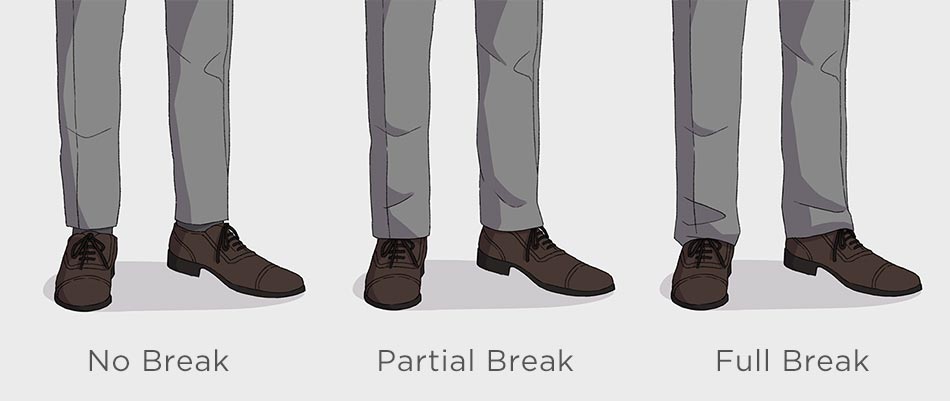
1. No break
No break is the trendy look that’s in favor now, but if you asked around, not everyone would recommend that this is how dress pants should fit. No break pants will have the bottom hem stopping right above your ankle, not quite reaching the top of your shoes. This break option will come with a tapered leg width and is one for the bold and style-savvy gents out there. With the shortest break, you’ll be showing the most amount of sock when you’re sitting and even a decent amount when you’re standing still, so make sure your sock game is on-point.
2. Partial Break
For the partial break, we’re going to combine two middle ground variations — the quarter and half breaks — into one. We broke these two down further on our full guide, but for brevity’s sake, we’ll combine these two options here into what is generally referred to as a partial break. With a partial break, your pants should just reach the top of your dress shoes. They should form a slight single vertical bend in the front crease of the pant legs just above their meeting point with the dress shoes. This is our tried and true recommendation on how dress pants should fit if you’re uncertain.
3. Full Break
A full break is the longest option, giving you enough extra fabric at your bottom hemline to reach or even cover your shoelaces. It will form a more pronounced vertical bend/wrinkle in the front crease of the pant legs above the hem. This is the no-nonsense, least trend-conscious break, but it’s a great choice for a more conservative office–and sometimes how dress pants should fit is dictated by our environment, not our personal choices. Just be aware that a full break done wrong can end up looking baggy, which can make an otherwise well-cut suit look distinctly un-tailored. Properly fitted full-break pants won’t have any “puddling”, even with the extra fabric.
Conclusion: Summing Up How Dress Pants Should Fit
Want some expert help on figuring out how dress pants should fit? Book an appointment with us, or shop online now to find your Flawless Fit @ Black Lapel.
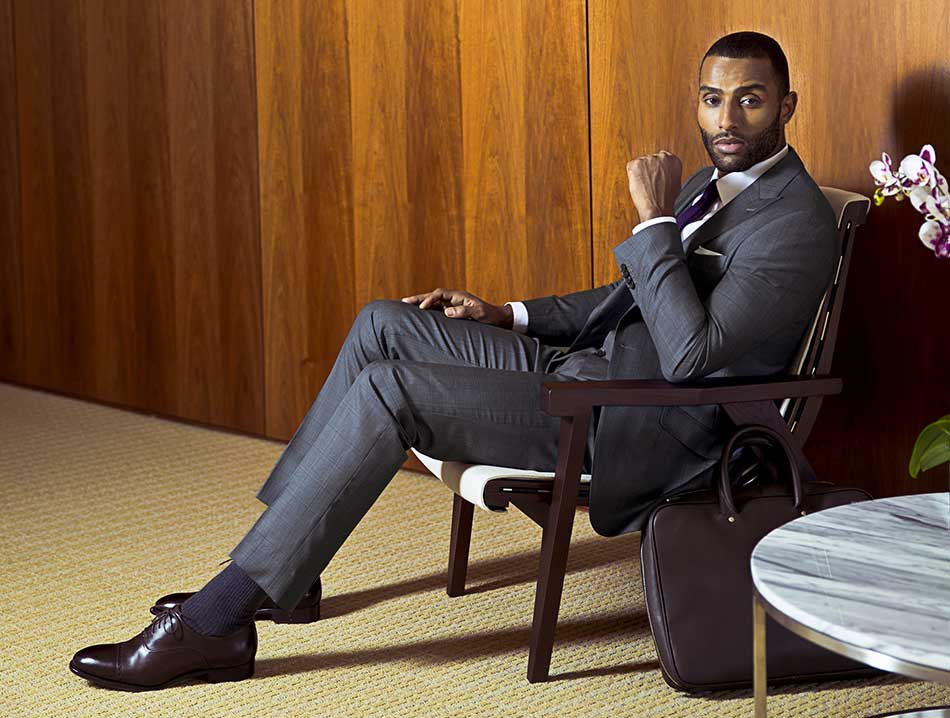
Your Next Move:
Like What You See? There's More.
We'll send you style advice and intel for the modern man.

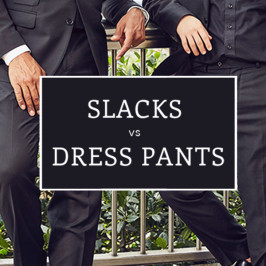
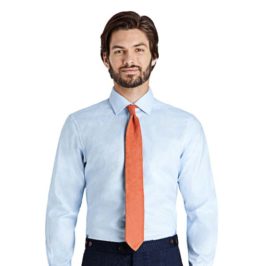
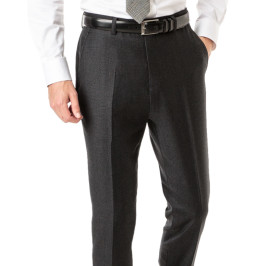
Great article, very informative. Thanks
I thought I’d let you know, the saying is “nip it in the bud” the term comes from gardening. Commonly mistaken with “butt”
Thanks again! 🙂
Excellent! Explanation!
Thank you guys.
Rev. Alfonso M Suárez, Pastor